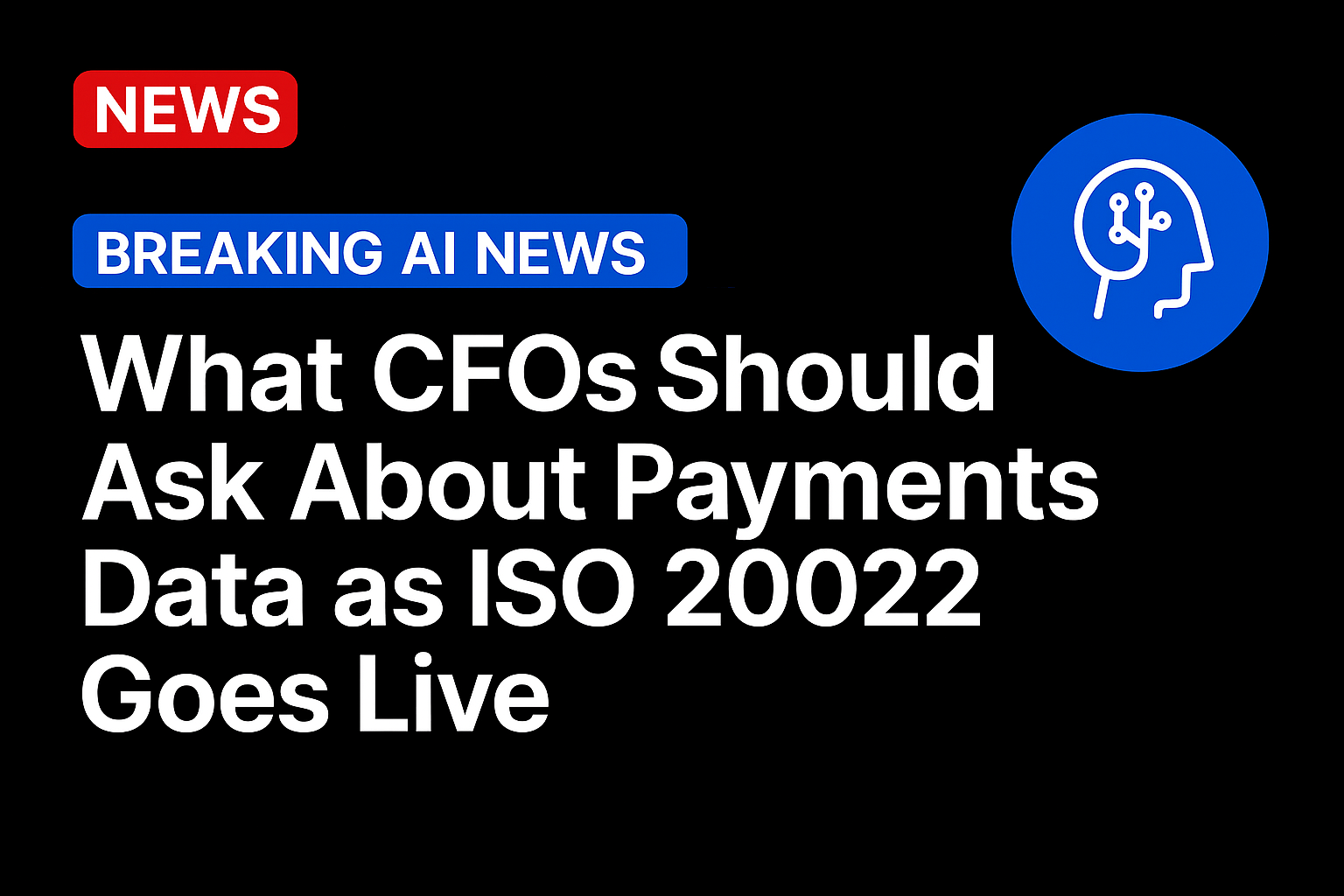For decades, the mechanics of business payments barely changed. Wires, ACH batches and card networks moved money from point A to point B with only modest variations in speed and supporting information.
The real differentiator across this historical ecosystem was financial strategy: how companies managed liquidity, planned capital allocation and navigated working capital constraints.
But with real-time payment rails, AI-driven reconciliation tools and Saturday’s (Nov. 22) migration to the ISO 20022 messaging standard reshaping much that has to do with moving money from A to B, finance leaders face a new mandate around the strategic potential of the information embedded within each payment.
With ISO 20022 going live, the value of a payment to chief financial officers and finance teams is no longer just the settled funds but the metadata, too. It’s the standardized identifiers. It’s the contextual detail that can be parsed by algorithms to prevent fraud, accelerate reconciliation, reveal operational inefficiencies and unlock real-time visibility across the enterprise.
But these benefits only materialize if finance leaders know what questions to ask their banks, technology vendors, ERP partners and internal teams.
The Questions CFOs Should Be Asking Now
Remittance information, the data describing who is paying, for what and under which terms, has historically been sparse at best. The constraints of legacy formats like the U.S. ACH’s 80-character addenda fields forced companies to squeeze essential information into cramped spaces. Accounts receivable teams often stitched together missing details from emails, PDFs and portals. The process was slow, error-prone and expensive.
But as of Saturday, all that is changing. After years of planning and incremental rollout phases, Swift’s existing MT messaging standard for cross-border payments was retired over the weekend, giving way entirely to the richer, XML-based ISO 20022 format.
With dramatically expanded data fields and structured remittance elements, the standard enables invoices, purchase orders, contract identifiers and tax details to travel with the payment in machine-readable form. Combined with digital invoicing and emerging “request for payment” protocols, this opens the door to straight-through reconciliation on a scale previously impossible.
For CFOs, the pressing question is: Are our banks and systems actually sending and receiving the data ISO 20022 makes possible? Because while the rails may support it, many institutions continue to truncate or map information into legacy formats unless clients explicitly demand full fidelity.
Another catalyst reshaping payment data strategy is the rise of real-time and near-real-time payment systems.The implications extend far beyond faster settlement. When payments move instantly, the accompanying data does too. That creates a new canvas for liquidity management.
When payments land instantly with granular timestamps and structured metadata, forecasting models become dynamic. Treasury teams can monitor cash in motion with near-perfect clarity, adjusting borrowing, sweeping and investment decisions on a continuous basis.
AI’s Dependence on Clean, Granular Payment Data
Machine learning has already transformed fraud prevention and anomaly detection. But the models are only as good as the data they consume. Historically, payments provided limited useful structured information; most insights came from behavioral patterns, not contextual detail. That is starting to change.
With ISO 20022 and richer remittance formats, artificial intelligence tools can analyze vendor hierarchies, cross-reference purchase orders, examine payment-term adherence, detect duplicates, and identify subtle deviations that may indicate internal control breakdowns or fraudulent vendor behavior.
“Data that sits within the enterprise is really being tapped into now by CFOs to really understand business performance drivers and where there might be red flags ahead,” Mastercard EVP of Commercial and New Payment Flows for North America Mike Kresse told PYMNTS in an earlier interview.
“I think we’re in a really exciting time,” he added, advising CFOs to “understand the data you have, understand how to protect it, and then how to organize it in a way that’s leverageable.”
All of this depends on the systematic capture, standardization, and preservation of payment metadata. CFOs can ask: Are we receiving data at the level of granularity our AI tools require? And just as critically: Are we exposing that data to the right systems in the right format? If data is truncated at ingestion or trapped inside a bank’s proprietary portal, the organization’s advanced analytics tools cannot access it.
What makes this moment so significant is that payment data, once treated as exhaust, is becoming a central engine for operational efficiency, financial accuracy, and strategic foresight.
Source: https://www.pymnts.com/




